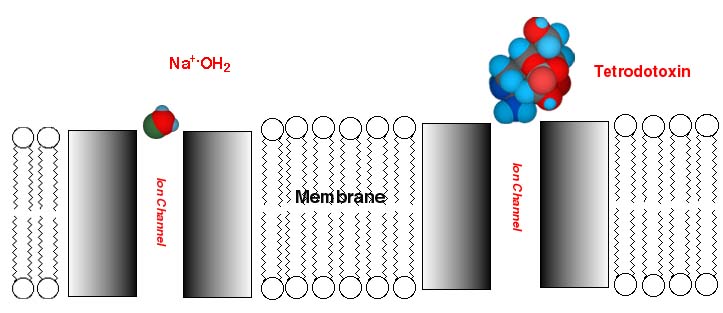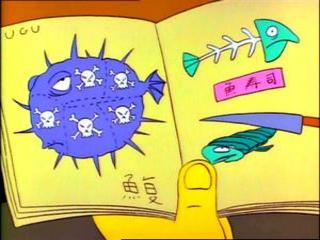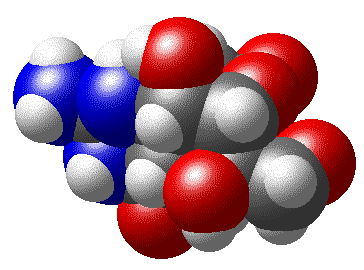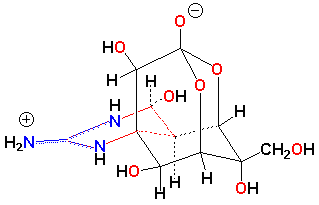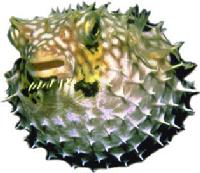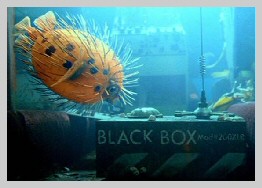|
Homer: Fan-fugu-tastic! [Homer eats some fugu] Akira, the apprentice chef, and the Master Chef frantically yell in Japanese to Homer. The apprentice chef tells Homer he may have been poisoned. Apprentice: No need to panic. There is a map to the hospital on the back of the menu. [At the hospital] |
|
|
U.K. CERTIFICATE: U/PG/12 |
|
|
RUNTIME: 22 mins |
|
|
SYNOPSIS: The Simpsons venture to the "The Happy Sumo" sushi bar, where Homer eats Fugu. Since the fugu has been badly prepared Homer is told that he may have been poisoned and only a day to live. |
Tetradotoxin (TTX)
|
Properties: A small, heterocyclic,
organic, water-soluble non-protein
molecule that is heat-stable (except in
alkaline conditions).
Background: Poisoning with the potent marine neurotoxin tetrodotoxin (TTX) occurs after ingestion of various species of puffer fish (i.e. Takifugu or ‘fugu’ in Japanese) as well as a number of other animals. Sushi chefs who wish to prepare fugu, considered a delicacy in Japan, must be specially trained and certified by the Japanese government, in order to prepare the flesh free of the liver, gonads and skin - where the toxin is concentrated. However, despite precautions, many cases of TTX poisoning are reported each year in Japan due to patients ingesting fugu. Toxicity: Toxicity levels are unclear as puffer fish have different concentrations of TTX. The LD50 for a mouse is around 10 ng. But a dose of 1-2 mg of pure TTX may be lethal to humans (LD50 is 5.0 - 8.0 µg/kg). A single milligram or less of TTX - an quantity that can be placed on a pinhead, is enough to kill a human adult. Pathophysiology: A bacterial or dinoflagellate species in endosymbiosis with the puffer fish is believed to synthesis TTX. |
Click on the picture above to interact
Chemical
Name: Tetrodotoxin |
|
TTX competes with the hydrated sodium cation (Na+) by specifically blocking the electrically active Na+ ion channel in nerve tissue (see image below) and therefore prevents diffusion of Na+ ions through the channel, while having no apparent effect on the flow of K+ ions. TTX is much larger than the Na+ ion and thus the TTX-Na channel-binding site is extremely tight (Kd = 10-10 nM) – like a “cork” in a bottle. Na+ ion flow is prevented until TTX slowly diffuses off. Hydrated Na+ ion binds reversibly on a nanosecond time-scale; whereas TTX is bound for tens of seconds. This virulent poison acts by blocking the conduction of nerve impulses along nerve fibres and axons, preventing depolarisation and propagation of action potentials in nerve cells. TTX binding results from the interaction of the positively charged guanidino group on TTX with peptide glutamate side group on the mouth of the channel, which subsequently, further tightens its grip when the peptide alters its confirmation increasing the degree electrical interactions. |
|
|
p |
The image below shows the interaction of an hydrated sodium ion and tetrodotoxin with sodium ion channels
